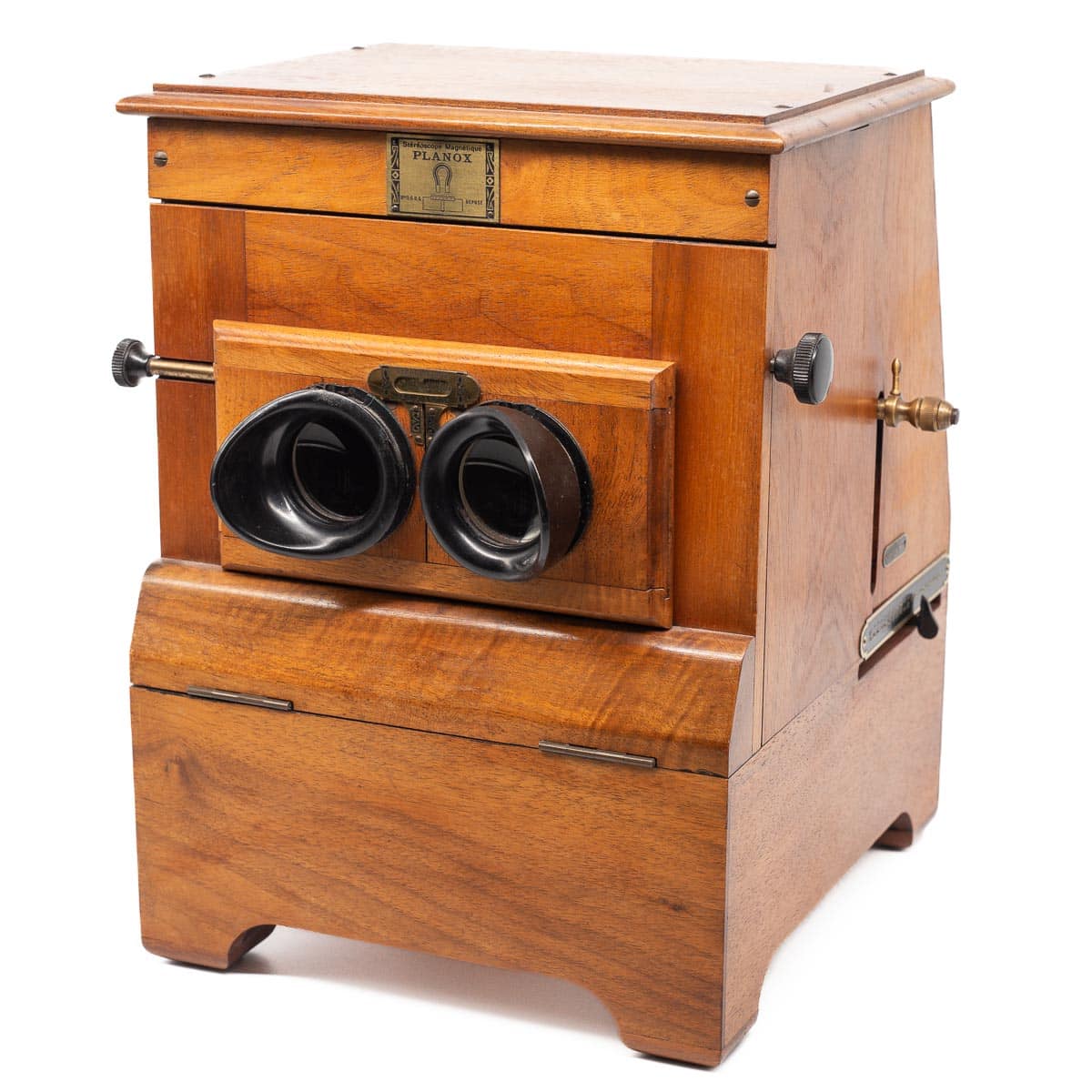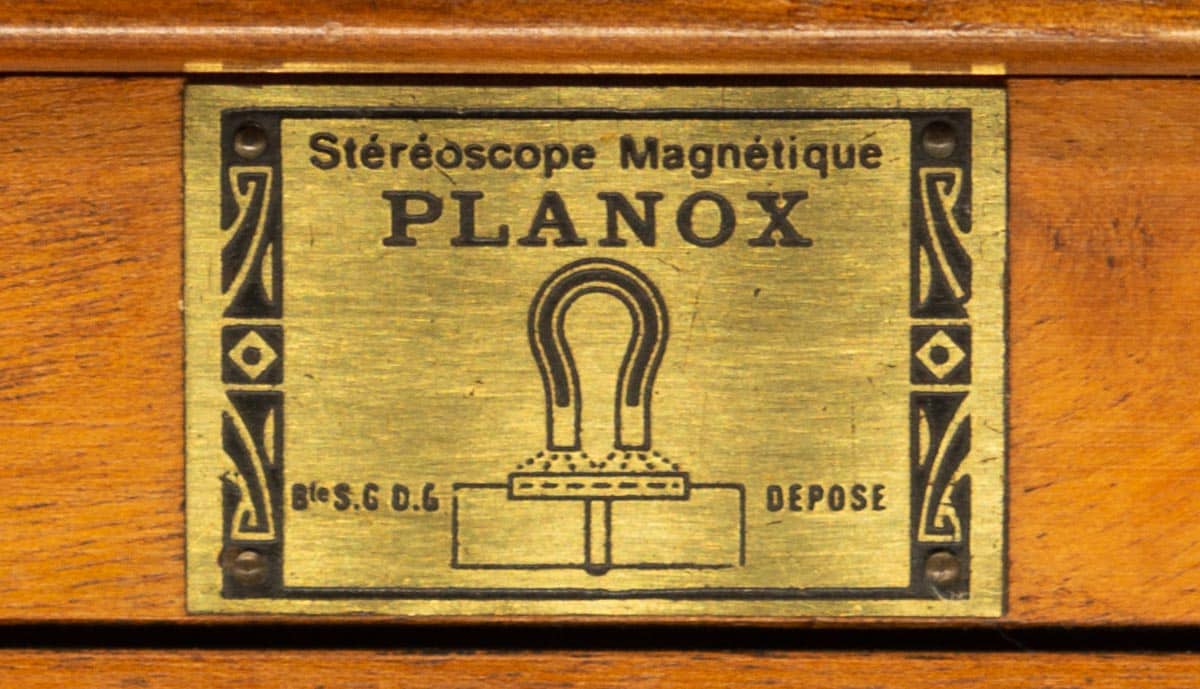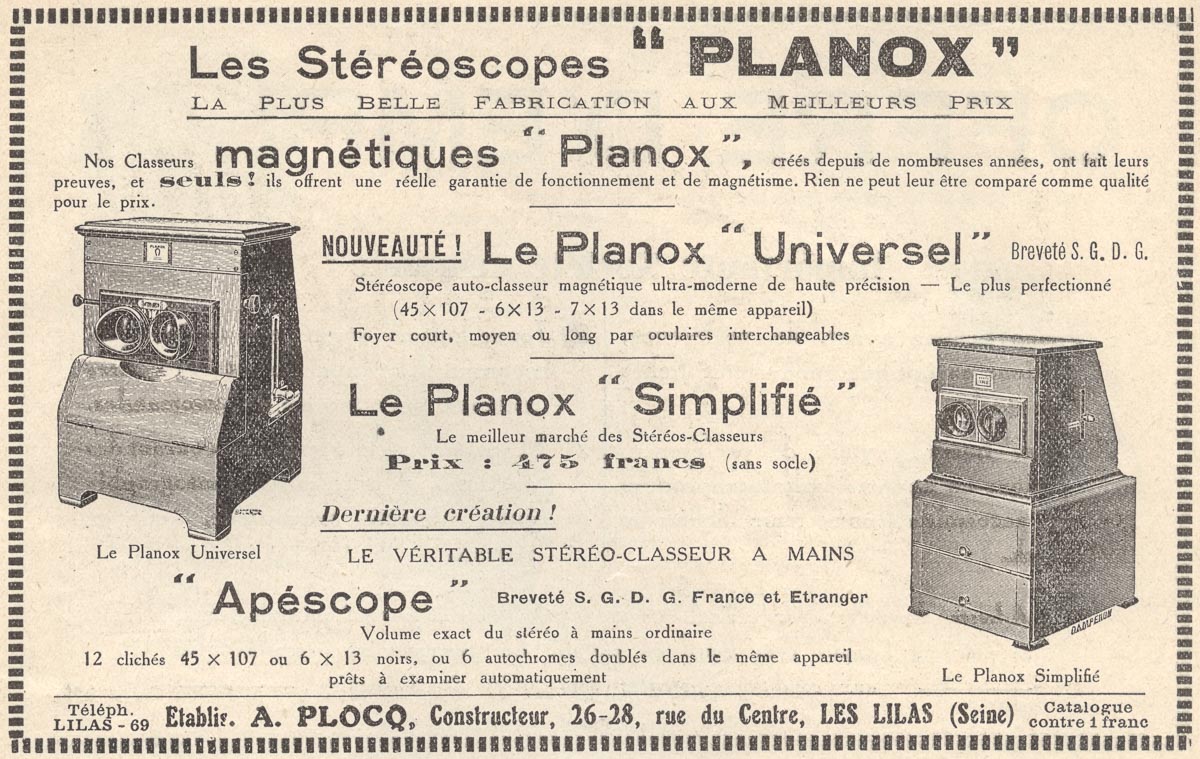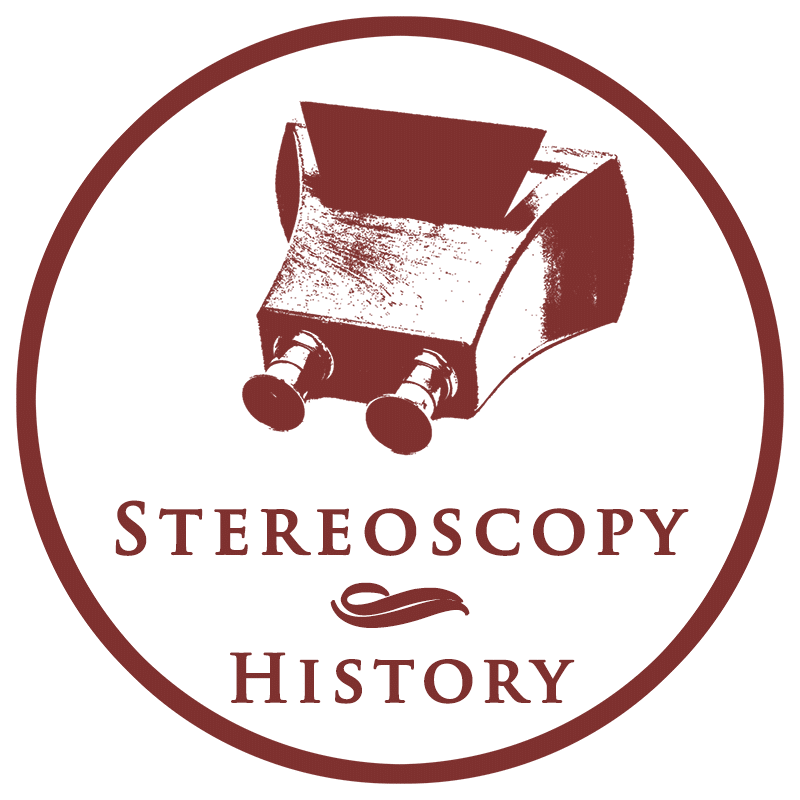
Le Planox Stéréoscope Magnétique is a tray-based stereoscope with a special mechanism. Most tray-based stereoscopes use a mechanism that pushes the glass slide from below with a metal finger, and places it in front of the lenses. The Planox pulls the stereoviews from the tray by using a magnetic pickup. Every stereoview should be provided with a little metal strip on top. The intention is to leave these strips, because changing them is cumbersome and could easily scratch the glass.
The mechanism with magnets was an invention of Modeste Noel. The first patent was registered in 19131. A second patent followed a year later2. Noel may not have had the need or ability to manufacture stereoscopes himself, and he sold the rights to manufacturers who used his design in their devices. The outbreak of the First World War may have prevented the first stereoscope with Noel’s mechanism from being produced earlier. The Planox Stéréoscope Magnétique was probably the first and appeared in 1921. Mattey introduced the Polnor stereoscope later which also used Noel’s magnetic pickup design.

Specifications
| Manufacturer: | Établissements A. Plocq |
| Year of introduction: | 1921 |
| Year of manufacture: | c. 1925 |
| Type: | Tabletop |
| Viewer: | Multi-view |
| Mechanism: | Tray-based |
| Bidirectional navigation: | No |
| Serial number: | None |
| Stereoview support: | Glass |
| Stereoview format: | 6 x 13 cm |
| Number of slides: | 20 |
| Lens focussing: | Yes |
| Inter-ocular adjustment: | Yes |
| Eyepiece blinders: | Yes |
| Dimensions (L x W x H): | 25 x 24.5 x 31 cm |
| Construction: | Wood |
| Other features: | The front panel contains a copper plate in Art Nouveau style with Stéréoscope Magnétique Planox |
Patent
| Number: | FR453451 |
| Title: | Stéréoscope classeur magnétique |
| Filing date: | 22-01-1913 |
| Publishing date: | 09-06-1913 |
| Applicant(s): | Modeste Noel |

Glossary: inter-ocular adjustment / multi-view / tabletop / tray-based
A. Plocq
The company Établissements A. Plocq was founded in 1895 by Alexandre Plocq (1871–?), and was located at 26-28 Rue de Center in Paris. His son, Alberic-Alfred Plocq (1896–1974), joined his father’s company and continued Établissements A. Plocq alone in the late 1920s or 1930s. Plocq manufactured hand-held and table-top stereoscopes for 45 x 107 mm, 6 x 13 cm and 7 x 13 cm glass stereoviews.
References
- Noel, M. (1913) FR453451 – Stéréoscope classeur magnétique. Via: data.inpi.fr ↩︎
- Noel, M. (1914) FR18733 – Stéréoscope classeur magnétique. Via: data.inpi.fr ↩︎
